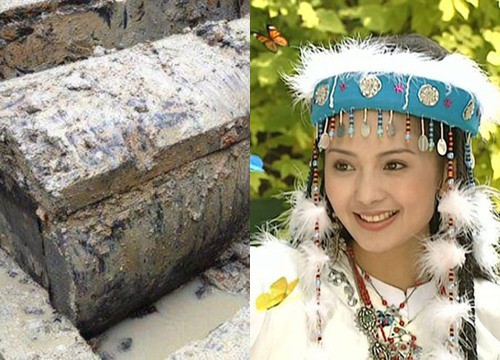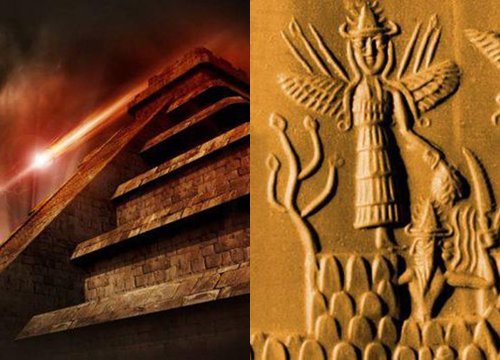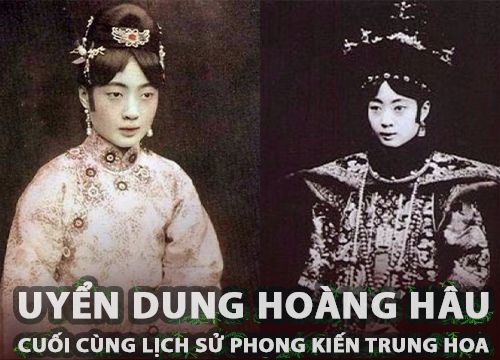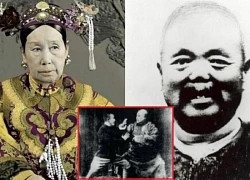Ghost Tower in the heart of Bangkok: Full of suicides, for sale, no one buys, the heroine is haunted while filming

4 | 0 Discuss | Share
Of the hundreds of Egyptian mummies found by archaeologists in the 19th and 20th centuries, only one remains, which has never been unwrapped.
It is the body of pharaoh Amenhotep I, the emperor who ruled ancient Egypt from 1525-1504 BC. His body was found in 1881 in a mausoleum in the city of Luxor, an ancient Theban stronghold on the banks of the Nile and 800 kilometers south of the Mediterranean Sea.
Documents show that the mummy of Amenhotep I was once stolen. Later, a group of priests reburied him around the 11th century BC. They fitted Amenhotep I with a gold necklace and 30 amulets, ranging from the Eye of Horus, the snake-headed charm to the scarab charm.
The pharaoh has been resting for more than 3,000 years, and it's been 140 years since it was found again in the 19th century. One reason no scientist has ever wanted to open the mummy is because it was so wrapped. delicate.
The corpse was wrapped in linen, covered from head to toe with red, yellow, and blue wreaths. The mummy's head has a mask crafted from wood and cardboard painted in pale yellow. Amenhotep I's eyes and eyebrows are painted black, and his pupils are made of obsidian crystals. On his forehead was a cobra inlaid with stones.
Recently, in a study published in the journal Frontiers in Medicine, Egyptian scientists say they have finally found a way to "open" the mummy of Amenhotep I without removing even a single piece of cloth. his shroud.
The work was performed using a Siemens Somatom Emotion 6 multi-probe CT scanner. They fitted the tomography machine inside the trunk of a truck and drove it into the garden of the Cairo Museum, where the mummy of Amenhotep I was removed and X-ray dissection began.
Like a hospital CT scan but longer, pre-calibrated X-rays will shoot through the specimen at various angles without destroying it.
Using a visualization software called OsiriX, the scientists were able to use "scalpel" tools and analyze the material to look at what was in Amenhotep I's mummy. The work was finally done. reveal the mysterious face of the king.
According to the CT scan, Amenhotep I is about 1m69 tall, has an oval face, sunken eyes and sunken cheeks. His nose is small, narrow and flat, some of his upper teeth are slightly protruding. With a narrow chin and small pierced ears, Amenhotep I looks a lot like his father Ahmose I.
However, based on CT scan alone, it is not possible to determine what cause Amenhotep I died from. His teeth and bones are perfectly healthy for his age. Scientists say the king's foreskin was partially circumcised, as an ancient Egyptian rite of passage.
In addition, "there were not any injuries or deformities due to illness that revealed his death," said Professor Sahar Saleem, one of the new study authors from Cairo University's Faculty of Medicine.
After his death, the body of Amenhotep I was removed from the body through an incision in the left flank. Except for the heart, the sacred organ that is considered to contain his soul is left in his chest. The entire body cavity is then stuffed with linen.
The CT scan also revealed details of the layers of linen wrapped around Amenhotep I. To the extent that scientists were able to use a "virtual knife" to tear them apart in each of his limbs, fingers and penis. .
Analysis of the material revealed that under the shroud of Amenhotep I there were 30 amulets and many jewels. All of this was something the priests of the 21st Dynasty had covered because the mummy of Amenhotep I had been robbed once.
Grave robbers brutally damaged his body, possibly to take away valuable jewelry.
Later, there was evidence that the priests during the reburial tried to rearrange the mummy, connecting the broken bones with turpentine. They put Amenhotep I's two broken fingers in his stomach, and fixed the broken foot with a wooden board and pins. Then wrap the whole body with new linen.
Kara Cooney, a professor of Egyptology at the University of California, said that priests in the 21st dynasty considered Amenhotep I as one of their ancestors. So they put a gold bracelet to show their devotion to the king.
Analysis revealed that there were 11 amulets in the mummy of Amenhotep I made of gold, 13 made of jade, quartz, 5 made of baked clay and 1 made of stone. In terms of shape, they range from Wadjet amulets (the eye of Horus symbolizing resurrection), scarab charms, double feathers, papyrus, beads, snail shells and snake head charms...
This explains why Egyptian mummies have always been the target of grave robbers and antiquities hunters.
Through the new study, the scientists say they have demonstrated the potential of CT scanning technology. It can allow us to see the inside of a mummy without opening and destroying the intricately crafted shroud and mask.
"The fact that the mummy of Amenhotep I has never been opened in modern times presents us with a unique opportunity: not only to study how he was originally mummified and buried, but also how he was brutally treated by thieves and reburied twice by the high priests over the centuries," Saleem said.
The team says CT scanning technology should be applied to studying mummies, not only in Egypt but also in other cultures like Peru, because now you can use X-rays to see inside without no need to "wake up" the eternal sleep of these mummies.
Queen of Egypt Hatshepsut - The first female pharaoh to rule the country without losing a single pharaoh  youtuber10:37:20 18/06/2021Egyptian history records many cases of women holding the pharaoh's throne. Among them, the most powerful and longest reigning was Hatshepsut, whose tomb was destroyed after 20 years of slumber. Hatshepsut (1508 - 1458 BC) was the eldest daughter of King Thutmose I and Queen Ahmose, the first king and queen of the...
youtuber10:37:20 18/06/2021Egyptian history records many cases of women holding the pharaoh's throne. Among them, the most powerful and longest reigning was Hatshepsut, whose tomb was destroyed after 20 years of slumber. Hatshepsut (1508 - 1458 BC) was the eldest daughter of King Thutmose I and Queen Ahmose, the first king and queen of the...

4 | 0 Discuss | Share

2 | 0 Discuss | Share

4 | 0 Discuss | Share

1 | 0 Discuss | Share

4 | 0 Discuss | Share

2 | 0 Discuss | Share

2 | 0 Discuss | Share

5 | 0 Discuss | Share

5 | 0 Discuss | Share

1 | 0 Discuss | Share

4 | 0 Discuss | Share

4 | 0 Discuss | Share



2 | 0 Discuss | Report